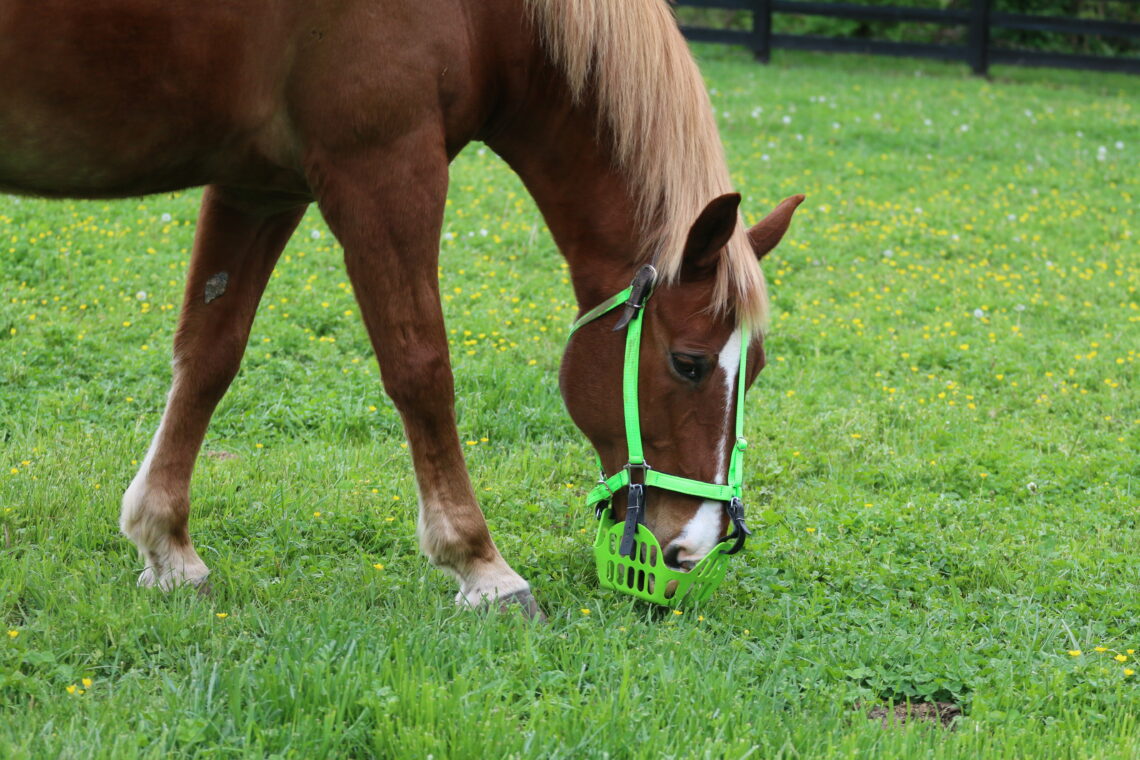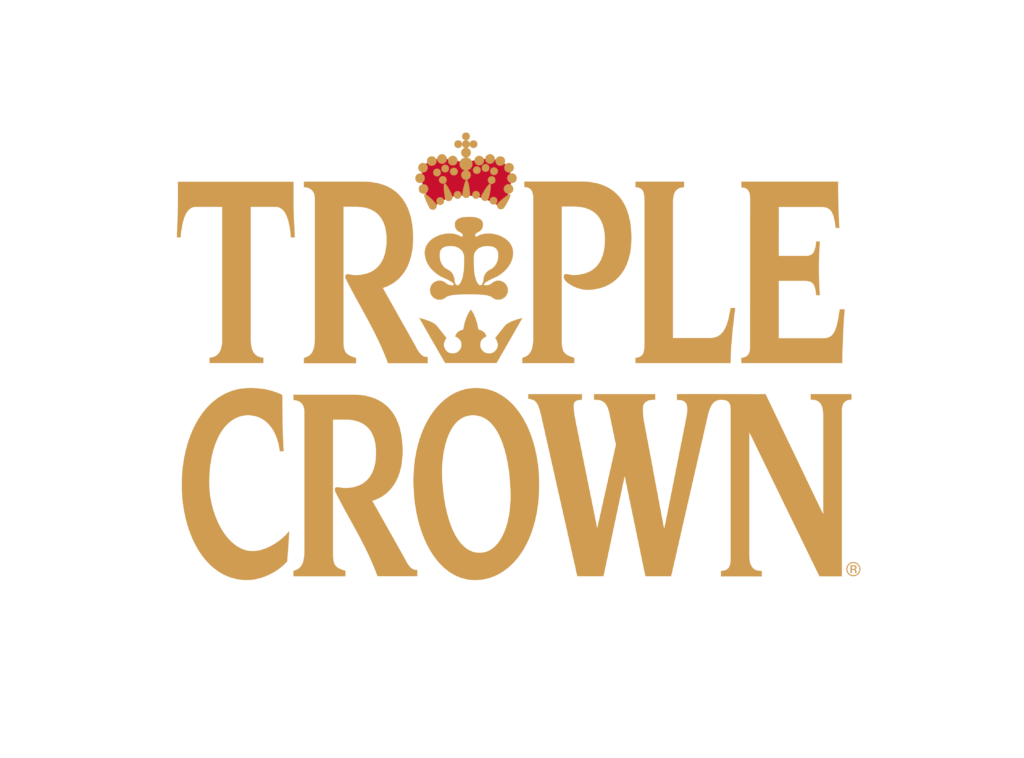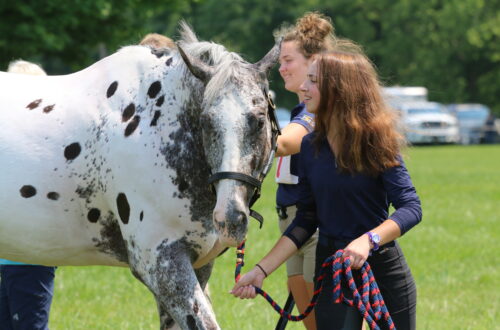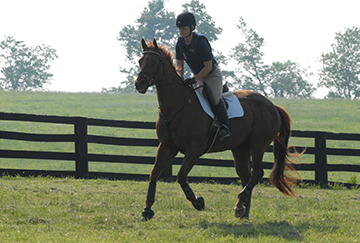
Feeding Recommendations for Metabolic Conditions
By Jessica Drexler
Brought to you by Triple Crown Feed, the Official Feed Sponsor of USPC
Your horse has been diagnosed with a metabolic condition, and now you are looking for ways to better manage his health. You may need to adjust your feed program to ensure your horse is getting not only the right amount of feed to maintain their weight, but all the essential nutrients as well. Let’s take a look at some conditions and the feed and management recommendations for those conditions.
Insulin Resistance (IR)
Insulin resistance occurs when the body’s cells are less sensitive to insulin, causing the pancreas to produce too much insulin, elevating blood insulin levels. Insulin is the hormone that regulates the amount of glucose in the body. IR is commonly seen in easy keeper breeds, but other breeds can have it too.
The typical IR horse is overweight and shows “fat pads” or regional adiposity. For the overweight-type IR horse, the focus should be on providing a nutrient-dense, low calorie feed, such as Triple Crown 30% Ration Balancer or Lite.
A ration balancer feed provides all the vitamins, minerals and essential amino acids that are lacking from the horse’s forage, with very low calories and carbohydrates and a low feeding rate of 1-2 pounds per day.
For an IR horse that’s the lean metabolic type, using a low-carb feed with calories sourced from fat and fiber is ideal, such as Triple Crown Low Starch, Senior or Senior Gold. In both cases, things to avoid include cereal grains like corn, oats and barley, as well as “sweet feeds” and high-carb feeds.
Low or controlled-carb forage is needed as well. Some hay sellers offer forage tests with their hay so you can make informed buying decisions. Another option would be to send off a hay analysis to a lab yourself. Soaking hay before feeding can reduce the carb content by about 3%, which may be helpful for some horses. There are also hay products on the market with guaranteed low NSC (sugar and starch) levels that you can use to supplement the forage portion of the diet. Ideally, keep the total NSC in the diet below 20%, and for some sensitive horses it may need to be below 10%. You can support the horse’s immune system by ensuring your horse is getting enough antioxidants (vitamin E, vitamin C and selenium). Pasture time also needs to be very limited—often IR horses need to be on dirt lots so their forage can be carefully controlled. Exercise and turnout time is important to help with weight and keep the horse happy.
Equine Cushing’s Disease
Cushing’s disease, also known as pituitary pars intermedia dysfunction (PPID), is a hormone-producing tumor or enlargement of the pituitary gland. Horses with Cushing’s often exhibit long hair coats with delayed seasonal shedding, excessive drinking and urination, and can have issues with maintaining proper weight. Other symptoms can include soft tissue injuries, sudden changes in feed requirements, and loss of muscling. Cushing’s horses often have an increased susceptibility to laminitis or founder.
The diet for a Cushing’s horse should include low-carb forage and a low-carb feed. Depending on the calorie requirements of your horse, you may look for a low-carb ration balancer to provide nutrients in a small low-calorie package or a low-carb senior feed to provide more calories. Seek low-carb hay sources and consider soaking hay to remove additional carbs. Cushing’s horses should be kept off lush pasture, with many not tolerating pasture at all. Medication can also be an important part of managing Cushing’s; discuss pergolide with your veterinarian.
Laminitis
Laminitis is a condition where the laminae that secure the coffin bone to the hoof wall become inflamed and weaken. The damaged laminae can detach from the hoof wall and in severe cases, the horse’s coffin bone can rotate and even penetrate the sole of the hoof. If you believe your horse is having a laminitic attack, seek veterinary assistance immediately.
There are various causes of laminitis, but for this article we’ll focus on diet and disease-related risks that can result in laminitis. Horses with endocrine disease, such as Cushing’s or equine metabolic syndrome, are prone to laminitis and need to be closely monitored. The increased carbs in spring and fall pasture can be a trigger for horses to develop laminitis. Laminitis-prone horses need a controlled-carbohydrate diet, often requiring the total carb content of the diet to be below 10% to prevent a recurrence. Keeping these horses at a lean body condition can be helpful, as well as exercised if they are able.
It can be difficult to find out your best friend has a metabolic issue, but you can play a big part in his comfort and health by putting together a safe diet, regular exercise program and staying up to date on necessary care. Your farrier, vet and other equine professionals are all important team members for keeping your horse happy and healthy for many years to come, and with proper management, your metabolic horse can continue to live a long life.
If you have questions about the right diet for your metabolic horse, visit www.triplecrownfeed.com/contact-us/ to chat with an expert.

About Triple Crown Nutrition — Official USPC Feed Sponsor
Triple Crown offers premium equine feeds that provide the exact nutrition your horse needs, designed to help support immunity and gut health. Learn more at TripleCrownFeed.com.
Read this story and more in the Spring 2021 issue of Discover USPC magazine.





